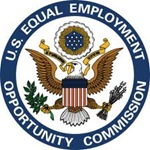The facts that led to the severance agreement in
Gascho v. Scheurer Hosp. (6th Cir. 11/19/10) [pdf] are what make employment law an interesting way to make a living. The legal issues surrounding the enforceability of a severance agreement, however, are what make this post worth reading.
Mary Ann Gascho, the plaintiff, was a 35-year employee of Scheurer Hospital. For the last 18 years of her employment, she was also married to the hospital’s President and CEO, Dwight Gascho. Dwight, it turns out, was having an affair with one of the hospital’s Vice Presidents. Around the time Mary Ann began to suspect her husband’s infidelities, he began physically abusing her. After Dwight admitted the affair and demanded a divorce, Mary Ann confronted the VP, calling her, among other things, “the whore next door.” That confrontation led to Dwight firing his wife. Cooler heads prevailed, however, when the hospital’s HR Director, Greg Foy, converted the termination into a three-day suspension. That suspension dovetailed into an FMLA leave.
Following the leave, the hospital offered Mary Ann a separation package. Foy presented her the agreement, explained and summarizing its key provisions, recommended that she hire a labor-law attorney to review the document, and told her that she would have 21 days to sign the agreement and seven days to change her mind if she did sign it. There was no physical harm or threats of physical harm between the day she was fired and the day she signed the agreement. Her husband, though, did use various methods of persuasion to try to convince her to sign, including lashing out and yelling at her. After consulting with her children, Mary Ann ultimately signed the agreement.
When she sued the hospital a year later for discrimination, the district court dismissed her claims as barred by the separation agreement. The 6th Circuit agreed, examining the following five factors to determine whether the release was “knowing and voluntary”:
- Plaintiff’s experience, background, and education.
- The amount of time the plaintiff had to consider whether to sign the waiver, including whether the employee had an opportunity to consult with a lawyer.
- Clarity.
- Consideration.
- The totality of the circumstances.
1. Mary Ann’s experience, background and education. The court concluded that a nurse—with more than three decades of experience and who rose to a management position—could comprehend the meaning and effect of a settlement agreement.
2. Time to consider the waiver and opportunity to consult an attorney. The hospital gave Mary Ann 21 days to review the agreement and seven days to change her mind after signing it. While Title VII does not have a statutory requirement for waivers, the 21 days mirrors the
OWBPA’s requirements for waivers of federal age discrimination claims. “This congressional policy in a related civil rights statute bolsters the conclusion that a 21-day consideration period and a seven-day reconsideration period suffices to establish a legitimate waiver.” That timeline gave Mary Ann ample opportunity to consider the agreement and consult with an attorney.
3. The clarity of the waiver. The waiver “releases and forever discharges [Scheurer] Hospital … from any and all claims of any nature … based on any fact, circumstance or event occurring or existing at or before [Mary Ann’s] execution of this Agreement. [It] includes all claims whatsoever … including … claims under …Title VII of the Civil Rights Act of 1964.” According to the Court, “One does not need a law degree to grasp the import of these terms.”
4. Consideration for the waiver. In exchange for the waiver, the hospital offered Mary Ann a year’s salary plus other benefits, which was more than sufficient consideration.
5. Other relevant circumstances. Mary Ann claimed that she was under duress to sign the agreement. The court disagreed:
All bargaining, whether to buy a house, to take a job or to settle a dispute, comes with implicit economic and psychological pressures—that if the one party does not take the offer, it may go to someone else…. The better the offer, indeed, the greater the implied fiscal threat, creating the possibility that a claim of duress grows stronger the more generous the offer.
That Gascho worried about having to file a lawsuit (and winning it) if she opted not to accept the settlement offer is precisely the kind of pressure anyone (not independently wealthy) would face in this context…. “No legal system can accept an assertion that ‘this contract was signed under duress because my only alternative was a lawsuit.’ That would eliminate settlement—and to a substantial degree the institution of contract itself.” …
Over one month had passed since the last act of physical violence…. Gascho had plenty of time to consider the agreement, plenty of time to rescind the agreement after signature and plenty of time to consult a labor attorney, as one hospital executive (Greg Foy) recommended she do. She spoke with several people before she signed the agreement, including friends and trusted family members (e.g., her children), and none of them advised her not to sign it. It is difficult to square these circumstances with the notion that Gascho’s husband coerced her to sign the agreement.
Like Mary Ann Gascho, anyone is free to challenge the knowing and voluntary nature of a release. As this case shows, however, it is very hard for employees to win these challenges.Courts treat settlement agreements as sacrosanct. If you resolve a case with an employee and obtain a signed agreement with a release that meets these criteria, you can ordinarily rest comfortably that you are free from future lawsuits brought by that employee.

 The EEOC recently published its
The EEOC recently published its  In her preschool class last week, my daughter had to share what she was thankful for. Her classmates gave the standard responses—parents, grandparents, siblings, maybe a pet or two. Her answer—Peter Pan. Good to know where my wife and I stand in her corner of the universe.
In her preschool class last week, my daughter had to share what she was thankful for. Her classmates gave the standard responses—parents, grandparents, siblings, maybe a pet or two. Her answer—Peter Pan. Good to know where my wife and I stand in her corner of the universe.  Thorogood v. Sears, Roebuck & Company (7th Cir. 11/2/10) [pdf]
Thorogood v. Sears, Roebuck & Company (7th Cir. 11/2/10) [pdf]